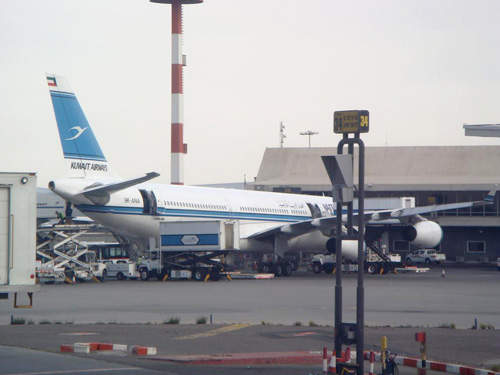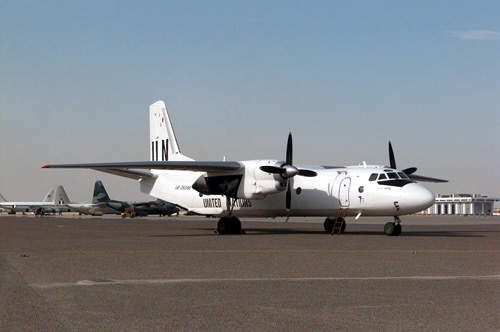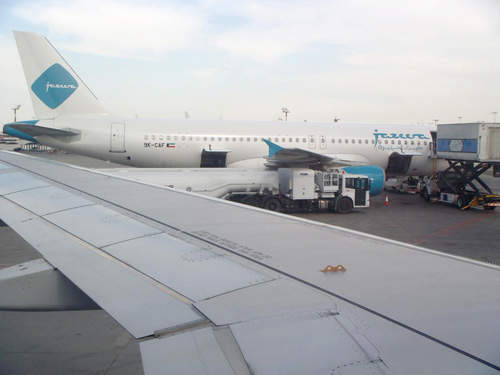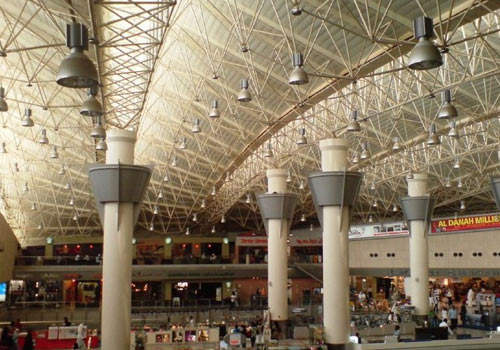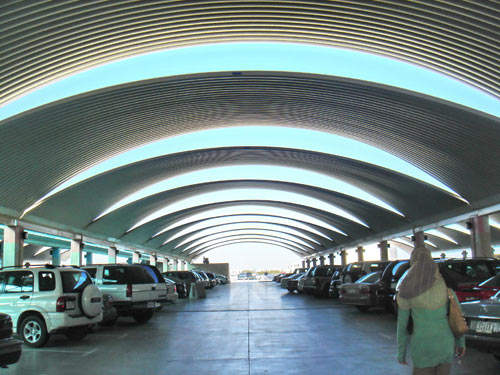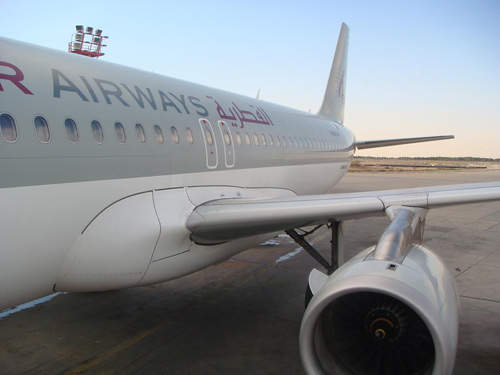Kuwait International Airport (KIA) is located in Farwaniya, 16km south of Kuwait City, the capital of Kuwait. The airport is a military-cum-public airport and houses Kuwait Air Force headquarters and Al Mubarak Air Base located at a portion of the airport. A Kuwait Air Force museum is also present at the airport complex. The airport is operated by the Directorate General of Civil Aviation (DGCA).
The airport handled more than seven million passengers in 2008 but steep rise in the passenger numbers and air traffic in the succeeding year resulted in the airport handling nearly 11 million passengers from January to September 2009.
The increased growth of traffic and passengers at the airport led to its expansion, which includes the construction of a new terminal and a new runway, reconstruction and extension of the existing runways, construction of a taxiway, aircraft stands and upgrade of other airport infrastructure. The project is being executed by the DGCA and funded by the Kuwait Government. The estimated cost of the expansion is KD600m ($2.1bn).
Kuwait International Airport expansion
The KIA went through an expansion in 1999-2001, when the passenger terminal building was expanded by 32,000m2. The project required KD18m ($60m).
The first phase in this expansion included expansion of the passenger terminal building, construction of a commercial complex (beside arrival hall) and provision of car parking facilities. The first phase of the project was completed and inaugurated in 2002.
The second phase of the project included expansion of the departures hall with 64 new check-in desks and state-of-the-art baggage handling systems among other facilities.
A new general aviation terminal was constructed at the airport in 2008. The terminal is operated by Royal Aviation. The terminal construction project was executed on a built-operate-transfer (BOT) basis.
The latest $2.1bn expansion project features two phases to be executed at different time periods. Phase I will see construction of a new terminal and upgrade of airfield infrastructure. The new terminal is anticipated to be complete by November 2016 and is expected to handle 13 million passengers per year.
The new terminal will be christened terminal 2 or Kuwait airways terminal. The new U-shaped terminal will spread over an area of 90,000m2 and will feature 30 gates. It will be located to the south of the existing terminal. It will be linked to the existing terminal through a new tunnel.
The airport will have eight gates capable of handling A380 aircraft. The airport is planned to reach the projected capacity of 20 million passengers a year after the new terminal becomes operational.
Also included in phase I is the extension of the runways at the airport. Once the airport’s western runway is extended to 4,775m, it will be the seventh longest runway in the world capable of handling the A380 aircraft. The other runway is planned to be 4,000m long. A new third runway is also planned to be constructed to the west of the airport. New aircraft parking spaces, a headquarters for the Directorate and additional taxiing roads are also included in this phase. Phase II (currently in the conceptual stage) will take the capacity of the airport to 55 million passengers a year. The expansion, however, will be executed in future when the airport will witness further growth in air traffic and passenger numbers. Phase II also includes construction of new passenger terminals and other infrastructure facilities.
Master plan
The master plan of the airport was updated in 1982 by Netherlands Airport Consultants (NACO). In 2004-05, the master plan of the airport underwent another update.
The updated master plan forecasts the developments required at the airport until 2034. It is divided into two phases – phase I deals with development projects at the airport for the next five years, while phase II deals with long-term projects. Completion of phase I will equip the airport to handle forecast traffic for next 10 years.
Phase I is divided into four projects. The first project includes reconstruction and expansion of the western runway 15R/33L to 4,775m. The second project includes upgrade of the eastern runway 15L/33R to 4,000m. Once this runway is upgraded, it will be used as the main runway for commercial airlines. A third runway 4,580m will be constructed to the west of the airport, the runway is planned to serve cargo aircraft and military aircraft.
The third project features a new DGCA building, construction of the third runway and two new fire stations. The final project includes construction of a state-of-the-art terminal building anticipated to be completed by November 2016.
A cargo complex which includes a cargo facility, aprons, aircraft stands is also proposed in the master plan. The two million m2 cargo facility is planned to handle up to 70 A380 freighters and is planned to have an annual capacity of 6mt of cargo.
Kuwait airport terminal features
The general aviation terminal is a three-storey building. It includes a hangar and an apron. Main building of the terminal features VIP lounge, conference facilities, private office and restaurants among other facilities.
The cargo complex at the airport measures 8,000m3 and has the capacity to handle 600,000t/y of freight. More than KD1m ($3.1m) has been invested in the complex over the past few years. The facility has a 5,600m3 import warehouse and a 2,300m3 export warehouse.
Runways
The airport features two parallel runways which are located to the east and west of the airport. The runways are 3,400m (11,155ft) and 3,500m (11,483ft) in length and in a direction of 15R/33L and 15L/33R. The smaller runway is made of concrete while the other is made of asphalt. The 3,500m eastern runway was inaugurated in 1986.
Air traffic control
The air traffic control tower at the airport was originally opened in 1986. The tower was 60m tall and equipped with the latest technology at that time. A new approach control and short-range radar system were unveiled at the airport in 2000. In 2002, a Doppler weather radar and a low level wind shear alert system were installed at the airport.
Parking
There are a total of 2,500 short and long-term car parking spaces available at the airport. The short-term car parking is a three-level 120,000m2 garage located adjacent to the commercial complex. The long-term parking situated a short distance away from the airport includes parking spaces for 670 cars.
Contractors
The consultants Sabah Abi Hanaa (SSH) and DORSCH Consult won the contract for updating the master plan and conducting the feasibility study of privatising the new terminal building and other facilities at the airport.
Kuwait government has formally requested the US Army Corps of Engineers (USACE) to provide assistance in the design and construction of infrastructure and facilities for Al Mubarak Air Base and the Kuwait Air Force headquarters complex located at the KIA. The estimated cost of the project is $700m.
The UK-based Foster & Partners won the contract worth KD19m ($66.7m) for the design of the new terminal at the airport. The terminal is being constructed at an estimated cost of KD213m ($748m).
Two bidders have been short-listed for the contract to build a runway, aircraft hangars and roads at the airport. The first among them is a group of Alghanim International General Trading & Contracting Company (Kuwait) and Gulf Leighton (Australia) which bid an amount of KD140m ($491m) for the project. The second bidder is Mohammed Abdulmohsin al Kharafi & Sons General Trading & Contracting (Kuwait) and TAV (Turkey) which bid the contract for an amount of KD167m ($586m).

